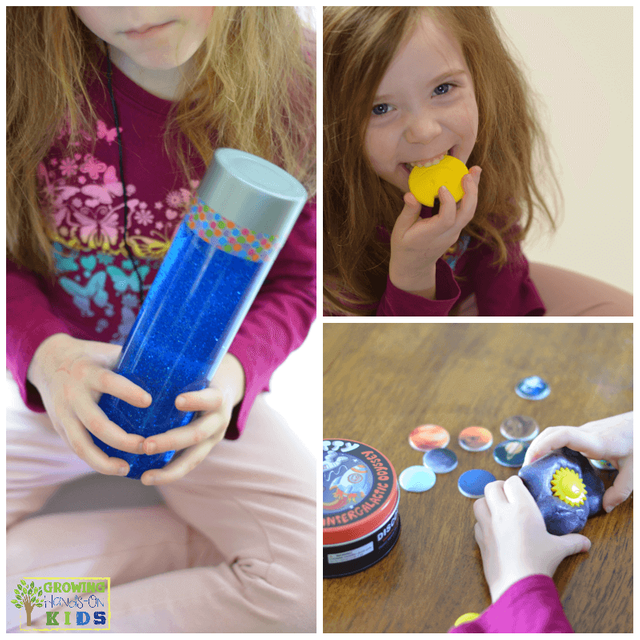Calm Down Toolkit For Kids
All children can benefit from calm down strategies, whether they have sensory processing challenges or not. Today I have teamed up with Fun and Function to share this great calm down toolkit for kids. You can use it in your home, classroom, or clinic/school-based practice. It's a great way to encourage independence in self-regulation for kids of all ages, with a little training. I have a free download for you today with some printables for setting up.
There is also a great giveaway from Fun and Function below (with two prize options!), so be sure to scroll to the bottom to enter the giveaway.

Teaching Self-Regulation Techniques
In order for calm down toolkits or any sensory strategy to work successfully, you need to teach children how to use them, BEFORE they are melting down.
There are many different emotions, but we all come hardwired with 6 main emotions. These are:
Happiness
Sadness
Fear
Anger
Surprise
 Disgust
Disgust
Teaching all children about emotions and how to react to emotions can benefit the entire classroom, home, or clinic/school-based setting. Children need to be able to recognize these emotions, how they feel, and the how different responses can affect them or those around them. Calm down strategies will not work as effectively unless a child understands WHAT they are feeling, WHY they are feeling the way they do, and then HOW to respond.
As an adult, I have to challenge myself to practice my own calm-down strategies in order to show my kids how to react appropriately. Of course, we all make mistakes and don't always respond the appropriate way. But by practicing these responses before we need them, it helps our brain to access these responses when we need them.
If you have a child or work with a child with sensory processing challenges, they often have emotional reactions to sensory input. These reactions can affect how they function in the home or classroom, which affects their ability to problem solve and learn. Preparing them with calm down strategies can be extremely helpful to them to function in the different environments.
Setting Up a Calm Down Toolkit
When you are setting up a calm down toolkit, it's important to provide things that will hit all 8 senses. Lots of gross motor movements to provide proprioception, vestibular, and also tactile input are the first 3 senses to focus on. Typically, these 3 senses are the basis of sensory processing challenges, so it is important to address these 3 senses first. Then you can pull in visual, auditory, taste, and smell to help with calming.
I was really excited when Fun and Function asked me to use some of their products to create this calm down toolkit. I wanted to choose items that would hit multiple sensory systems that you could use with multiple kids. Fun and Function also has a lot of other amazing products you can look through to add to your toolkits. And of course, you can always use your own DIY options.
Your toolkit can be put into a basket or plastic bin with a lid that child has access to in your home or classroom. It's important that it is accessible without the child needing your input to encourage self-regulation and independence with calming strategies.
I included the following items in my calm down toolkit:
I Am Feeling Chart
This Is How I Breathe
Visual Cards for Calming from Fun and Function
Discovery Putty – Intergalactic Odessey
Happy Face Fidget Necklace from Fun and Function
Glittery Calm Down Bottle
And I wanted to suggest some other ideas you could include, these can be found on the Fun and Function as well.
Bean Bag Chair (for proprioceptive and tactile input)
Headphones (noise canceling or playing soft music for auditory input)
Visual Timer (for visual input)